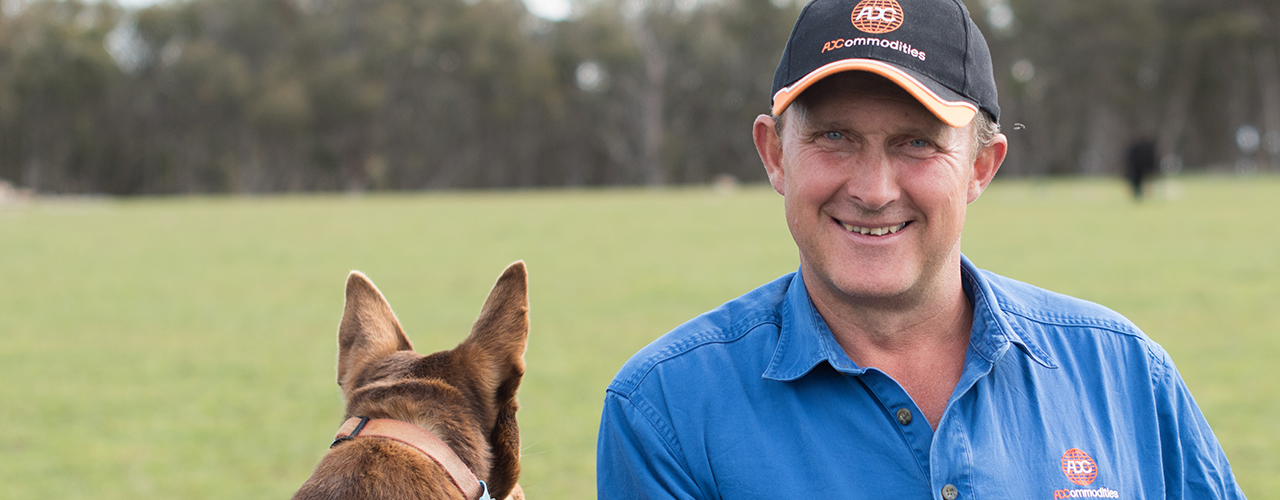
Andrew Carruthers
Andrew Carruthers
Andrew Carruthers can’t remember a time when he didn’t use genetic selection tools in his business.
Andrew Carruthers can’t remember a time when he didn’t use genetic selection tools in his business.
“Dad was a seedstock producer, so appreciating the value of genetic selection, and using industry tools such as BREEDPLAN and Australian sheep breeding values (ASBVs) to improve production, have always been the way we’ve worked,” he said.
“Use of genetic selection tools combined with good management has seen us lift our flock and herd performance in terms of kilograms/hectare.”
Andrew and his wife Sarah run 2,632ha from Wollomombi to Baldersleigh in NSW and focus on breeding Angus feeder steers for Jack’s Creek Feedlot, Wagyu females for Japan’s live export market and Lambpro lambs for the domestic market.
The Curruthers are focused on customer satisfaction, and genetic selection decisions are market-driven, tempered by the need for structurally sound, productive animals that have longevity.
Selecting the right sheep
“In our composite, self-replacing sheep flock, our main concern is twinning. We want ewes that will produce twins as long as possible, so phenotype – what the ewe looks like – is really important,” Andrew said.
Rams are always selected on breeding values and phenotype.
“Fertility and positive fat are important,” Andrew said.
“We want high-performance mothers that turn off lambs inside four months, and that have good milk and udder structure.
“It snows here and can get down to minus 15 degrees in winter so selecting rams with positive ASBVs for fat helps our ewes to lay down fat. It’s like carrying a lunch box with them during winter.”
Selecting strictly for these traits for the past four years has seen the number of lambs weaned increase by more than 30%.
More recently, the focus has spread to moderating mature ewe weight.
“At 16 months old, our ewes are 75kg with 35kg twins on them,” he said.
“Our breeding program is a balancing act between production goals and longevity, and we use genetic selection and visual appraisal to try and stay on what we think is the right path.”
Cattle tactics
Andrew’s approach to the Angus breeding program is equally measured.
“Again, the first thing I look at is phenotype; a breeder needs to look good, have a good udder and be structurally sound so that when our calves go into feedlots for 300–400 days, they’re structurally sound as well,” Andrew said.
For Andrew, a moderate parental birth weight is nonnegotiable. “It’s directly related to live calves.”
“I won’t buy a bull over a birth weight estimated breeding value (EBV) of +5.5kg,” he said.
“Even if you join, for example, a bull with a birth weight EBV of +7kg, that heavier birth weight can still be expressed through the heifers, and that’s something we want to avoid.” To ensure herd efficiency, Andrew has strict parameters on cow size.
“We want a moderate cow size; we won’t go over a mature cow weight EBV of +110kg, which is sometimes hard to balance with growth rates,” he said.
“Larger cows are more expensive to run.
“We keep an eye on milk; it must be above breed average, then we look at what the client wants, which is good 400 and 600day weights and marbling for eating quality.”
Andrew won’t go below 2 on IMF (intramuscular fat; the EBV for marbling).
“We work closely with customers and end-users. They’re very open in telling us what they need,” he said.
“For example, the Japanese market wants a 500kg carcase with as much marbling as possible so, in terms of EBVs, that’s 400 and 600 days and IMF.
“In selecting on all these traits, we’ve seen our end product over the past four years go up one whole AUS-MEAT score (for marbling) across the Angus program.
“In our F1 beef program, we’ve been able to increase and maintain weaning weights, improve our heifer conception to 92%, keep our cow conceptions over 90%, and use our bulls at a ratio of 1:70.”